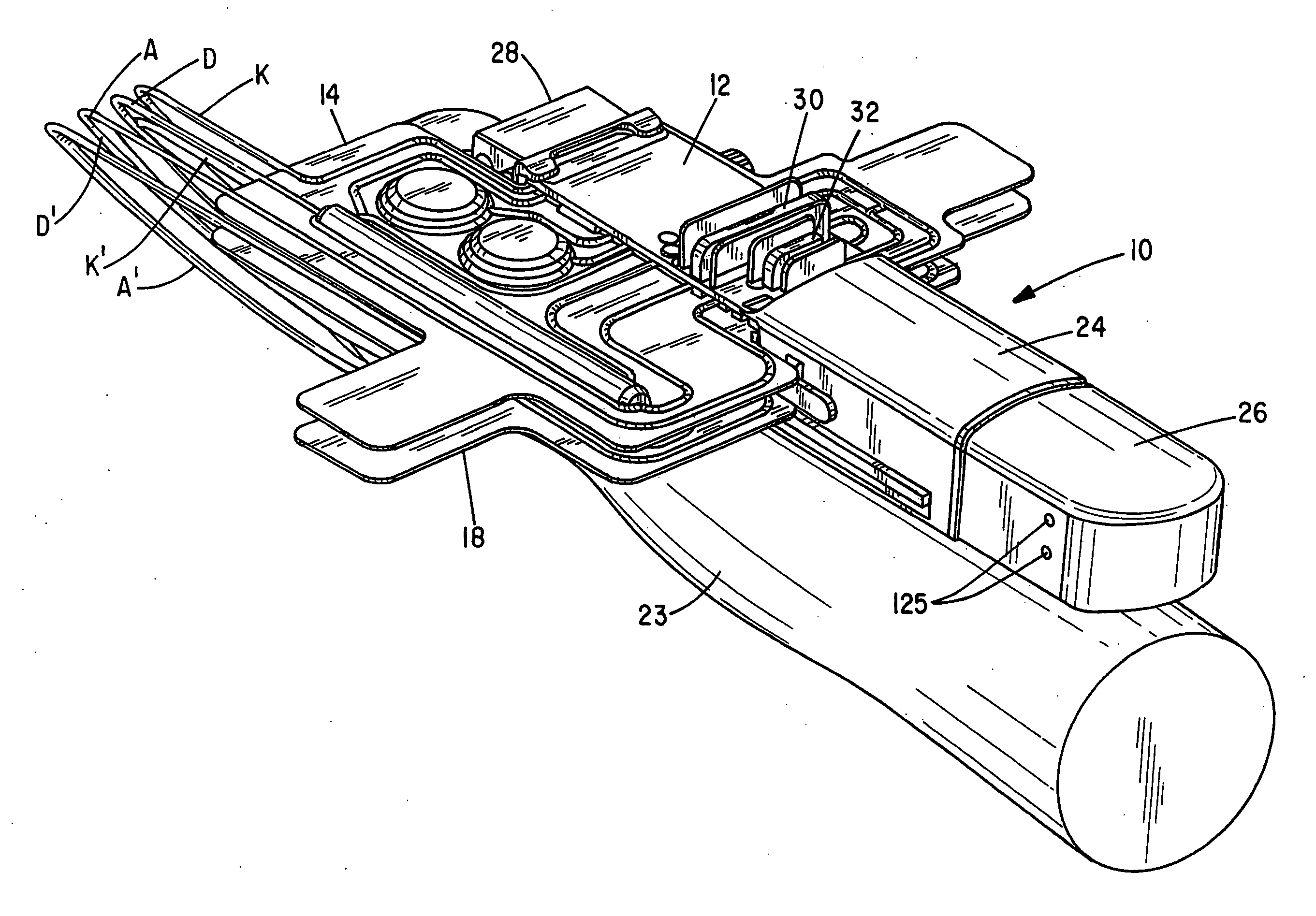Chronic access system for extracorporeal treatment of blood including a continously wearable hemodialyzer
a technology of hemodialyzer and access system, which is applied in the field of artificial organs, can solve the problems of insufficient removal of toxins and/or water from the blood, inability to adequately remove toxins and/or water, and inability to properly prepare dialysate or membrane conduction system, etc., to achieve the effect of reducing or eliminating rapid fluctuations in body fluid volume, improving patient safety, and reducing or eliminating the rapid fluctuation of body fluid volum
- Summary
- Abstract
- Description
- Claims
- Application Information
AI Technical Summary
Benefits of technology
Problems solved by technology
Method used
Image
Examples
Embodiment Construction
[0048]Certain terminology will be used in the following description for convenience in reference only and will not be limiting. The words “upwardly”, “downwardly”, “rightwardly” and “leftwardly” will refer to directions in the drawings to which reference is made. The words “inwardly” and “outwardly” will refer to directions toward and away from, respectively, the geometric center of the device and associated parts thereof. Said terminology will include the words above specifically mentioned, derivatives thereof and words of similar import.
[0049]Referring to FIG. 1 and the exploded view of FIG. 2, there is indicated generally by numeral 10 a preferred embodiment of the invention, namely, a portable, wearable, hemodialyzer. It is seen to comprise a layered construction of a rigid non-disposable top end plate 12, an upper, flexible, blood contacting plastic disposable member 14, a non-disposable, rigid molded-plastic pump frame 16, a lower, disposable, plastic, blood-contacting member ...
PUM
| Property | Measurement | Unit |
|---|---|---|
| diameter | aaaaa | aaaaa |
| internal diameter | aaaaa | aaaaa |
| internal diameter | aaaaa | aaaaa |
Abstract
Description
Claims
Application Information
 Login to View More
Login to View More - R&D
- Intellectual Property
- Life Sciences
- Materials
- Tech Scout
- Unparalleled Data Quality
- Higher Quality Content
- 60% Fewer Hallucinations
Browse by: Latest US Patents, China's latest patents, Technical Efficacy Thesaurus, Application Domain, Technology Topic, Popular Technical Reports.
© 2025 PatSnap. All rights reserved.Legal|Privacy policy|Modern Slavery Act Transparency Statement|Sitemap|About US| Contact US: help@patsnap.com



